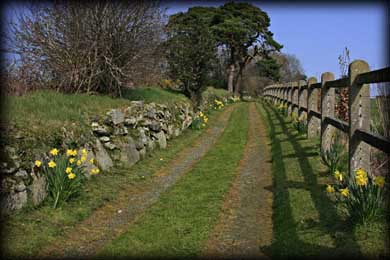Cranavane
Holy Well
This well was possibly the best surprise of our visit to Carlow. We had planned to visit this well the previous day but ran out of daylight. Having resigned ourselves to not visiting on this trip, what a delight that on our way to Altamont gardens the next morning, we missed our turn and drove right by here. A sign pointed down the most lovely daffodil-lined track that soon opened to the well site full of blooming dafs! The photos do not do it justice in that even the enclosure walls were lined with these sunny flowers. The lower well sits at the base of a mound with stone walls encasing the mound on the east, south, and west sides, and an opening to the south into a small chamber which is roofed over. It was described by an expert in 1839 as "This is, with the exception of St Mullins, the most perfectly enclosed well I have seen." But even more fascinating is that in front of the well there is a stone trough in the shape of a coffin. It is believed that at one time coffins were dipped into the trough prior to burial in nearby Barragh Church graveyard.
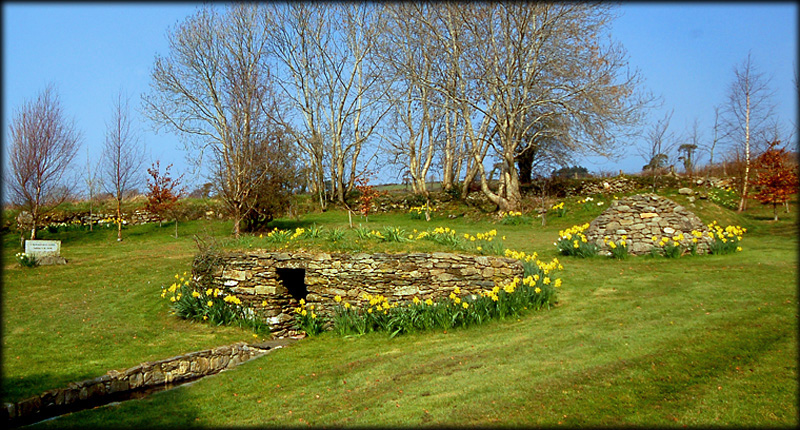
Traditional belief has it that Cranavane well was once the site of pre-Christian ceremonies. The name of this well translates as the "Well of the Birch Tree", a tree whose Druidic associations are those of birth, purification and driving away of evil, illness or darkness. It is believed to have been used by druids during special rituals because it bears a geographic relation to the rising of the sun. The waters of the well are said to cure ailments including soreness of the eyes, pains and hurt limbs. The site is believed to have been christianised by St Finnian who built a monastery here.

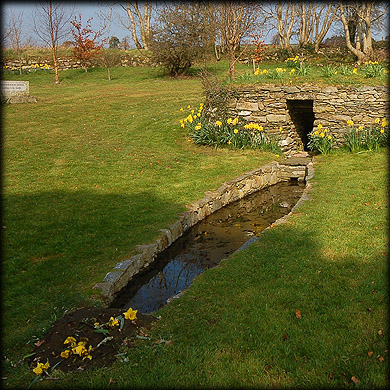
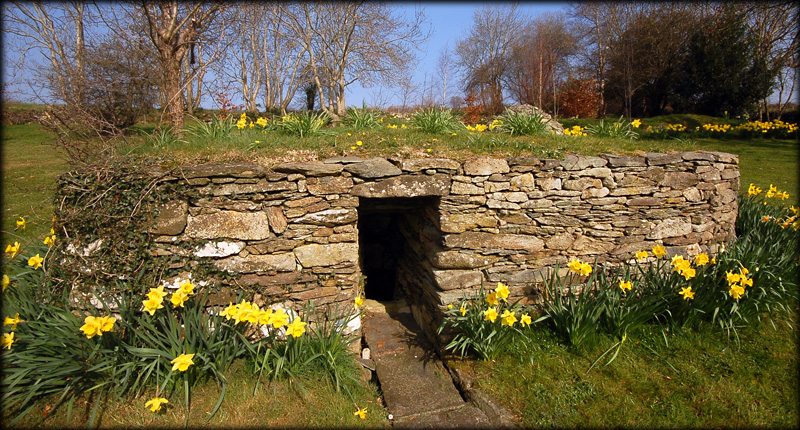
St Finnian was born in nearby Myshall in 454 AD. Stone foundations within the enclosure are the remains of the monks cells and other monastic buildings, and a second (upper) well on site was the spring-water source for the monastery, this simple unadorned well is pictured left. Since then, Cranavane Well has become a place of religious gatherings at certain times of the year. In the nineteenth century large gatherings at the well could sometimes become rowdy and drunken, leading to the suspension of Patron mass in 1870. This tradition has recently been restored. Spring is obviously a good time to visit this rather picturesque well.
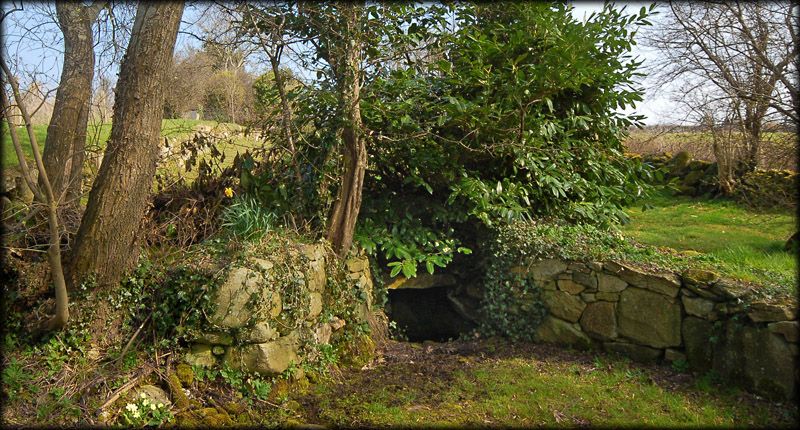
Situated: Easy. From Tullow take the N81 South. Turn left onto N80. 5.6 kilometres turn right. 3k turn left onto R724. The well is sign-posted 800 metres on your left.
Discovery Map 61: S 682 605. Last visit March 2011.
Longitude: 6° 43' 27" W
Latitude: 52° 41' 23" N
Photos: Jim Dempsey and Deb Snelson.
